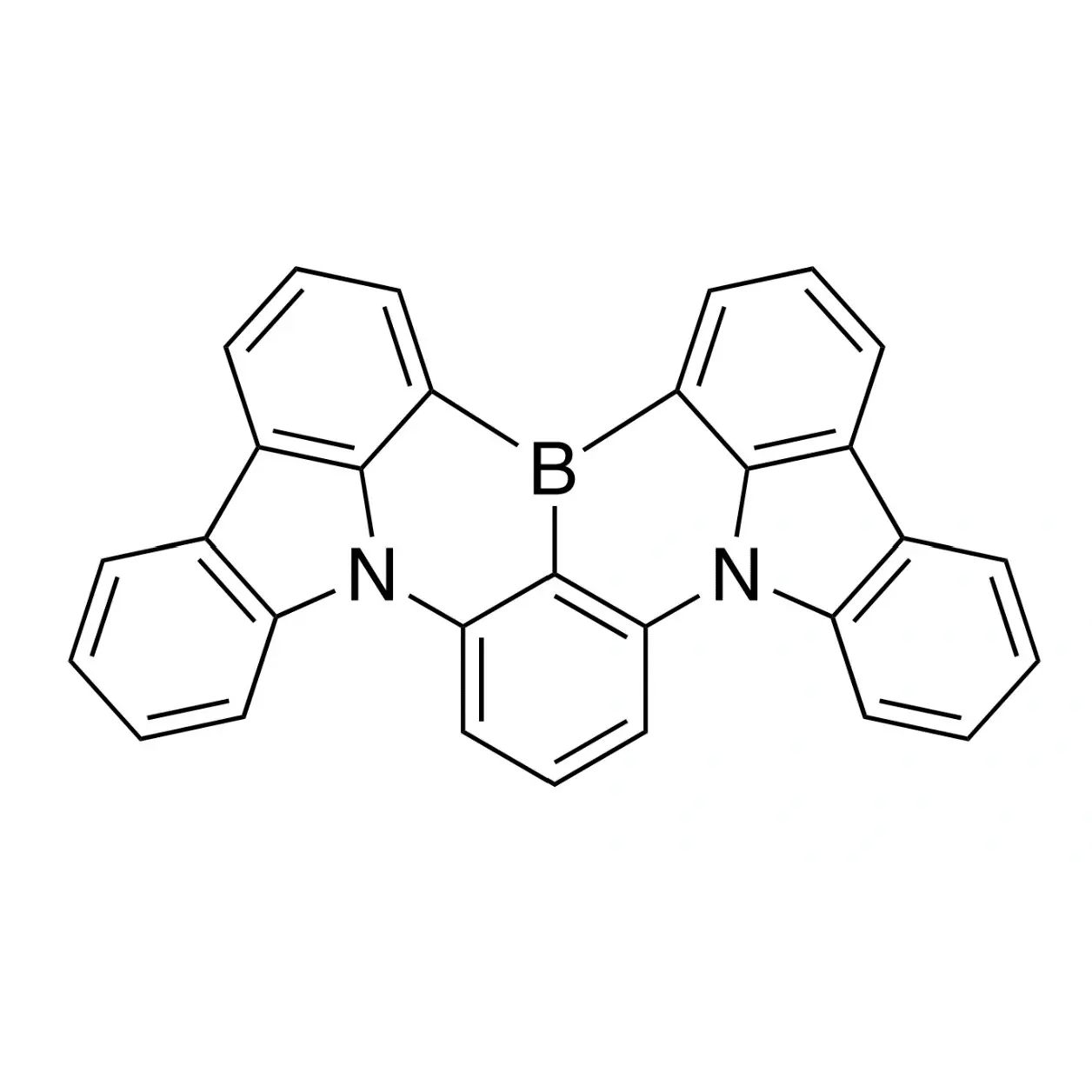CzBN
Product Description
CzBN, or 2,6-Bis(9H-carbazol-9-yl)boron, is a unique organic compound that stands out for its electronic and optical properties. It consists of carbazole units bonded to a boron atom, which enhances its electron-accepting capability and thermal stability. This molecular structure positions CzBN as a promising material in the development of organic electronic devices, where its ability to efficiently transport electrons and exhibit luminescence is crucial. The carbazole units not only facilitate efficient charge transport but also contribute to the compound's overall stability, making it suitable for applications in harsh environments.
Application
CzBN is primarily targeted at improving the performance of Organic Field Effect Transistors (OFETs) and Organic Light Emitting Diodes (OLEDs), where its electron-accepting properties and thermal stability offer advantages in device performance and reliability. Its structure also enables the formation of thin films, aiding in the manufacturing process of these devices. Additionally, the compound's luminescent properties suggest potential applications in lighting technologies and displays, where its ability to emit light upon electrical excitation can be leveraged for signaling or illumination purposes. The versatility and performance of CzBN highlight its importance in advancing the field of organic materials science and electronics.
Articles:
- Investigating HOMO Energy Levels of Terminal Emitters for Realizing High-Brightness and Stable TADF-Assisted Fluorescence Organic Light-Emitting Diodes
Publication Date: 12 March 2021
Yi-Ting Lee, Chin-Yiu Chan, Masaki Tanaka, Masashi Mamada, Umamahesh Balijapalli, Youichi Tsuchiya, Hajime Nakanotani, Takuji Hatakeyama, Chihaya Adachi
https://doi.org/10.1002/aelm.202001090
- Solution-processed multi-resonance organic light-emitting diodes with high efficiency and narrowband emission
Publication Date: Available online 22 October 2020
Shen Xu, Qingqing Yang, Ying Zhang, Hui Li, Qin Xue, Guohua Xie, Minzhao Gu, Jibiao Jin, Ling Huang, Runfeng Chen
https://doi.org/10.1016/j.cclet.2020.10.022
- TADF activation by solvent freezing: The role of nonradiative triplet decay and spin-orbit coupling in carbazole benzonitrile derivatives
Publication Date: Available online 15 April 2019
T. Hosokai, H. Nakanotani, S. Santou, H. Noda, Y. Nakayama, C. Adachi
